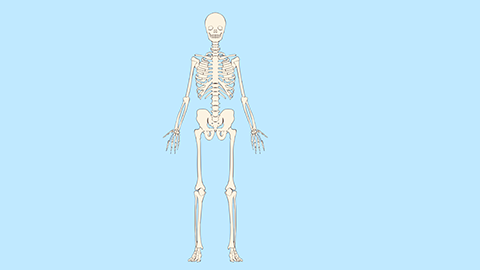What are the main causes of lumbar spine fractures?
Generally speaking, the main causes of lumbar vertebral fractures may include aging, stress fractures, traumatic fractures, osteomyelitis, diabetes, and other factors. Symptomatic management through general treatment and medication is usually required. If symptoms are severe, prompt medical attention is recommended, following the doctor's instructions for treatment. Detailed explanations are as follows:

1. Aging
With increasing age, the regenerative capacity of bones weakens, bone density decreases, and bone structure becomes thinner, increasing the risk of fractures. It is recommended to undergo regular bone density examinations to detect early signs of osteoporosis promptly. Additionally, maintaining a healthy lifestyle, such as quitting smoking and limiting alcohol consumption, and avoiding prolonged maintenance of the same posture is advised.
2. Stress Fractures
Stress fractures occur when the lumbar vertebrae are subjected to repetitive or sustained stress over a long period, causing gradual micro-damage and destruction of the bone tissue. Over time, these small injuries accumulate, eventually leading to lumbar vertebral fractures. It is recommended to ensure adequate rest in daily life or work. Pain and muscle tension can also be relieved through physical therapies such as heat application and massage.
3. Traumatic Fractures
Traumatic fractures are typically caused by high-energy injuries, such as traffic accidents, falls from height, or sports injuries. These injuries exert excessive pressure on the spine, causing the lumbar vertebrae to fracture under the strain. Patients need prompt medical attention and should undergo X-ray, CT, or other examinations to determine the fracture's extent. Depending on the severity of the fracture, patients may need to wear braces for immobilization to limit movement and promote bone healing.
4. Osteomyelitis
Osteomyelitis is an infectious disease occurring in the bone marrow. The inflammatory response can cause bone destruction, weakening the skeletal support and making fractures more likely. Patients may also experience symptoms such as fever, local redness, swelling, heat, and pain. It is recommended that patients follow medical advice to use medications such as clindamycin hydrochloride tablets, minocycline hydrochloride capsules, and amoxicillin capsules to treat the infection and repair damaged bone tissue.
5. Diabetes
Diabetes primarily results from defects in insulin secretion or impaired biological function, leading to elevated blood sugar levels. The hyperglycemic environment in patients affects the function of bone cells, inhibiting bone formation and accelerating bone resorption, which leads to decreased bone density and increases the likelihood of fractures. Patients may also experience symptoms such as excessive thirst, frequent urination, and weight loss. It is recommended to follow medical advice for the use of medications such as acarbose capsules, glimepiride tablets, and gliquidone tablets to alleviate symptoms and prevent complications.
In daily life, one should pay attention to protecting the lumbar spine, avoiding external injuries, and engaging in moderate exercise, such as walking and calisthenics, which can help maintain lumbar health.
References
[1] Zhang Guoquan, Huang Liangliang, Zhou Xu, et al. Research Progress on Flexion-Distraction Injuries of the Thoracolumbar Spine[J]. Orthopedic Journal of China, 2025, 33(05): 436-441.
[2] Sun Lei, Ma Jianxiong, Jin Hongzhen, et al. Advances in the Management of Injured Vertebrae During Surgical Treatment of Thoracolumbar Fractures[J/OL]. Biomedical Engineering and Clinical Medicine, 1-7 [2025-03-20].




